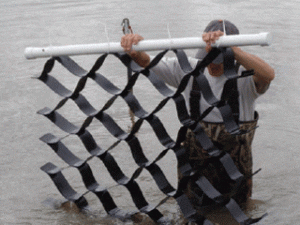A Waterways Commission subcommittee has been formed to examine adding artificial reefs just offshore and in the St. Johns River.
The federal government has closed several offshore fishing spots in recent years because of depleted fish stocks. There are also large tracts of water that have been placed off limits to vessels around military installations for security reasons.
“While we grow and while we’re seeking opportunities for tourism, we’re not growing our access to waterways on the same level that we’re experiencing in the growth in population,” Shine said.
RestrictionsThe recent restrictions cover hundreds of miles of ocean off the Southeast coast of the United States. Along the First Coast, those restrictions are hampering an industry that generates about $556 million a year for Northeast Florida, according to a report Shine drafted in January based on a 2010 Florida Fish and Wildlife Conservation analysis.
Shine based his figures on the North Florida share of fishing licenses sold in the state along with other factors, such as fishing industry tracking data the state agency used to develop estimates.
Recent federal regulations restricting offshore catches of grouper, red snapper and other fish are already beginning to take their toll on the area recreational fishing industry.
“We’ve been losing ground,” said Vic Tison, who runs a charter boat fishing service and is chairman of the North Florida Chapter of the Recreational Fishing Alliance. “We’re getting less and less areas to fish. Where’s that going to leave us?”
Adding to the frustration for anglers is a restricted zone instituted around Mayport Naval Station last year.
With little public notice, the U.S. Army Corps of Engineers added a 380-foot no-vessel zone on a 2½-mile stretch of water surrounding the base.
Tison said it has already blocked many of his charter excursions that used to sail near the base.
Roy Crabtree, the Southeast regional administrator for National Oceanic and Atmospheric Administration Fisheries, said the agency takes into account the economic impact when implementing restrictions. In addition, Crabtree said recreational and commercial fishing interests were represented on the panel that made the decisions.
SolutionsWhile Shine concedes there is little sports anglers can do about the restrictions, he thinks the problem can be mitigated by creating new areas for fishing.
He said creating artificial reefs within 3 miles of shore would put those waters under state jurisdiction, cutting the federal government out of the equation. In addition, Shine wants artificial reefs to be sunk in the St. Johns River near the Mill Cove area in order to offset the restricted zones around the Mayport base and Blount Island.
“It increases access to fishing opportunities,” Shine said. “The federal government is drawing boxes on a map that are shutting down fishing and access in those areas.”
Crabtree said Shine’s proposal could provide some increased access in the face of the federal restrictions.
“If they were to put artificial reefs in state waters over there, that may provide access in fishing for anglers of a variety of species,” he said.
Tison acknowledged Shine’s proposals could keep the recreational fishing economy stable.
“It’s very important,” he said. “We’re getting less and less areas to fish continually. … Anytime you put a rock down or a structure down in the water, it’s going to create fishing habitat, and that gives the anglers more areas to fish.”








